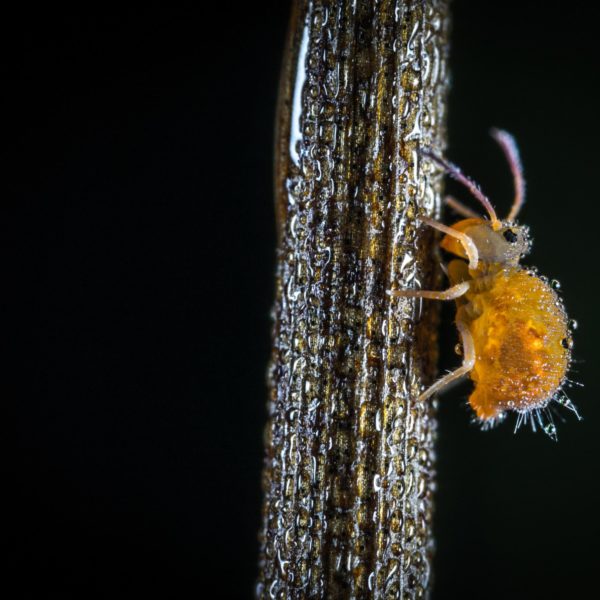Pests are far more common in outdoor gardening, but hydroponic gardens can get them too. The most common pests in hydroponic systems include: aphids, fungus gnats, spider mites, thrips, and whiteflies. Most pests don’t do enough damage to kill plants if you catch them quickly. However, noticing them can be the first problem.
Here’s what to look for to spot the most common pests in hydroponics:
Aphids – appear green, black, or gray, and prefer gathering on stems. Leaves are drained, and turn yellow.

Fungus gnats – adult fungus gnats are harmless, but will fly around plants. Larvae are deposited on roots, where they eat root tissue.

Spider mites – small webs appear throughout plants, and wiping the bottoms of leaves will show streaks of spider mite blood.

Thrips – black, shiny spots appear on leaves, and damage is obvious. Leaves may develop yellow spots before drying out and turning brown.

Whiteflies – look just like tiny white moths, and are very easy to spot. They drain plant leaves, causing white and yellow spots.

Preventing pests is easier than getting rid of them. Always go into your grow room with clean clothes and hands. It’s not difficult for pests to hitch a ride and make it into your grow room. Make sure your grow area is well sealed from the outside, too.

How to Get Rid of Pests in Your Hydroponic System
There are plenty of ways to get rid of an infestation. Of course, it’s easier if you spot the first intruders than it is when they take over your plants. Keep a close eye on your plants and take care of pests right away. These insects can reproduce quickly, and a day or two can make a big difference.
If the pests are centered on a single plant, remove it, and treat the rest of your plants. Naturally, different methods work better on different types of pests.
If you have flying pests, like whiteflies or fungus gnats, sticky traps are essential. Mature fungus gnats may not harm plants, but they certainly produce the larvae that does. Sticky traps won’t clear an entire infestation. However, it will catch some difficult pests, and reduce your problem. It also makes it far easier to identify exactly what you’re dealing with.
Another option that organic hydroponic growers use is beneficial predators. These are insects that feed on the pests plaguing your system. It might sound counterintuitive but adding bugs to get rid of bugs can be surprisingly effective. That’s especially true if you want to avoid using chemicals.
Then, you have spray and soap options. Both of these can be either natural or chemical formulas. Pyrethrin and Neem oil are some of the most popular natural options for getting rid of pests. You can even spray your plants with water to knock some pests off your plants.
It’s up to you to discern exactly how bad the problem is, and how much intervention is needed. Chemical solutions can be used in dire circumstances. Just make sure it won’t affect your crop, and that it’s safe to use for plants, and around people.
Check Also…




